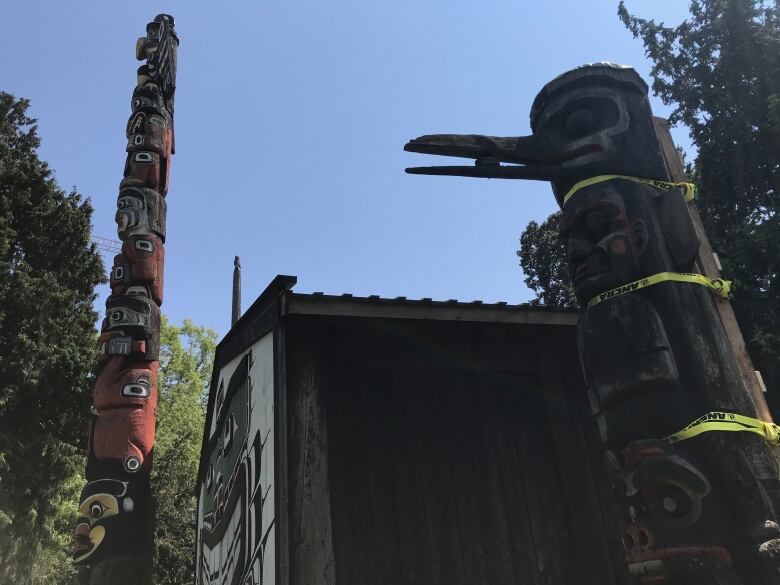Indigenous repatriation projects get new funding from B.C. government
'There was sort of a colonial treasure hunt that began whenEuropeans arrived here,' says museums president

The British Columbia government says it's providingfinancial support to Indigenous communities that want theirancestral remains and cultural objects returned.
Countless Indigenous pieces of art, artifacts and human remainsare held by museums around the world and many local communities andhuman rights experts have said they should be returned home.
Jodi Simkin, president of the B.C. Museums Association, saidEuropeans collected evidence of Indigenous culture even as theytried to erase it.
"There was sort of a colonial treasure hunt that began whenEuropeans arrived here,'' said Simkin, who is also director ofcultural affairs and heritage for the Klahoose First Nation on Cortes Island, located off the east coast of Vancouver Island.
"Policy was designed to eradicate and amalgamate First NationsPeoples into the larger community and there was a sense that ifanthropologists and archeologists didn't preserve those pieces andthose ancestors for later study that the communities would justdisappear because they would have been acculturated orassimilated,'' she said.
The work going on today builds on generations of Indigenousleaders and their allies working to bring ancestors and culturaltreasures home, she said.
Millions of objects or remains
The collections aren't limited to Canada or to museums.
Simkin ispart of a repatriation working group with the Association onAmerican Indian Affairs and said the organization estimates betweenone million and two million ancestors and related cultural patrimonyare sitting in museum collections around the world.
"Why that number is significant is that it does not includewhat's being held in private collections, so that number could beexponentially higher,'' Simkin said.
The government is providing $500,000 to the B.C. MuseumsAssociation to provide a range of grants to support communities atvarious stages of the process.
It will help some of the 203 First Nations and 23 culturalcentres in the province bring home more of their loved ones andbelongings although there's never really enough funding for such alarge undertaking, she said.
Repatriation for reconciliation
The funding will support repatriation planning, building capacityto take on such projects and encouraging collaboration with culturalorganizations.
Dan Smith, chairman of the museum association's Indigenousadvisory committee, said the funding allows museums, archives andIndigenous peoples new opportunities to work together towarddecolonization and realizing the goals set out by the Truth andReconciliation Commission and the United Nations Declaration on theRights of Indigenous Peoples.
"True, meaningful and lasting reconciliation must include thereturn of Indigenous culture back to Indigenous communities,''Smith, a member of the Wei Wai Kum First Nation nearCampbell River, said in astatement.

The government has previously provided $2 million over threeyears to the Royal B.C. Museum in Victoria for repatriation activities, includinga symposium, granting program and the creation of a repatriationhandbook.
The Royal B.C. Museumchanged its policies last year tono longer collect or study ancestral remains.
The museum also announced that anything it acquired fromIndigenous Peoples during the anti-potlatch years, from 1885 to1951, will be considered eligible for repatriation because it wasobtained at a time of duress.
During those years, the federal government banned potlatchceremonies, which were important social events where valuable giftswere given to show generosity and status over rivals.
During a repatriation seminar at the University of BritishColumbia in March, experts said repatriation is costly and the onusis mostly on communities to come up with the necessary funding.

Lou-ann Neel, a Kwakwaka'wakw artist and repatriation specialistat the Royal B.C. Museum, told the seminar it's exciting to find artand cultural artifacts in museum collections, but it's alsoheartbreaking to know they've been withheld from generations.
Repatriation is crucial to healing and fostering a sense ofidentity, she said.












_(720p).jpg)


 OFFICIAL HD MUSIC VIDEO.jpg)
.jpg)



























































































